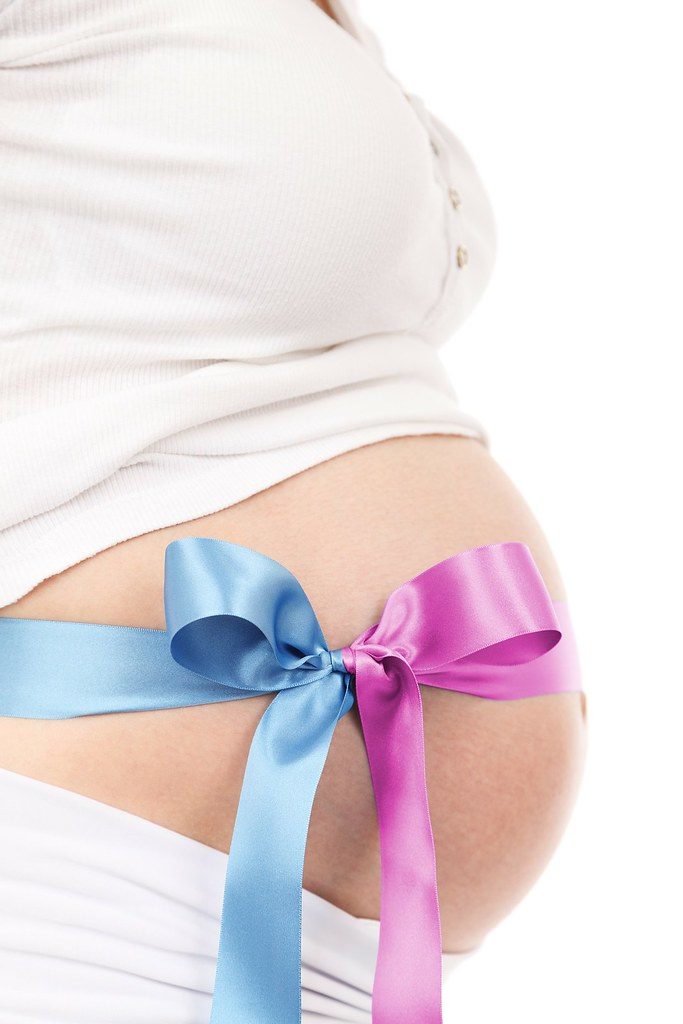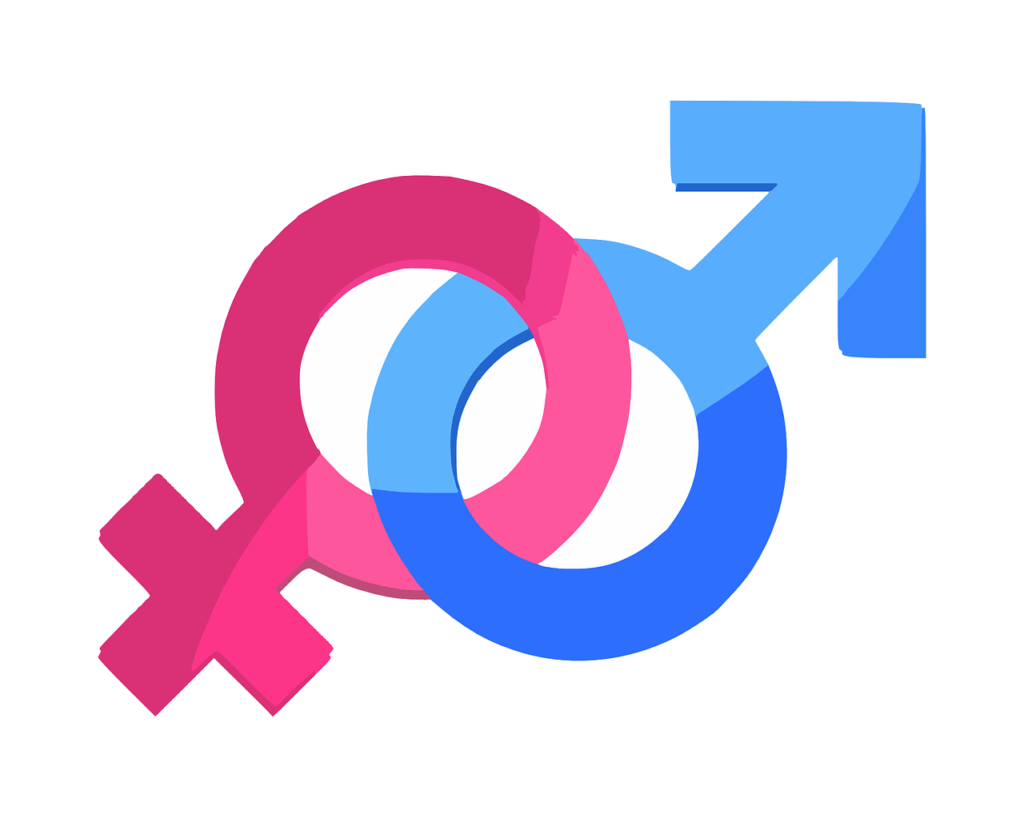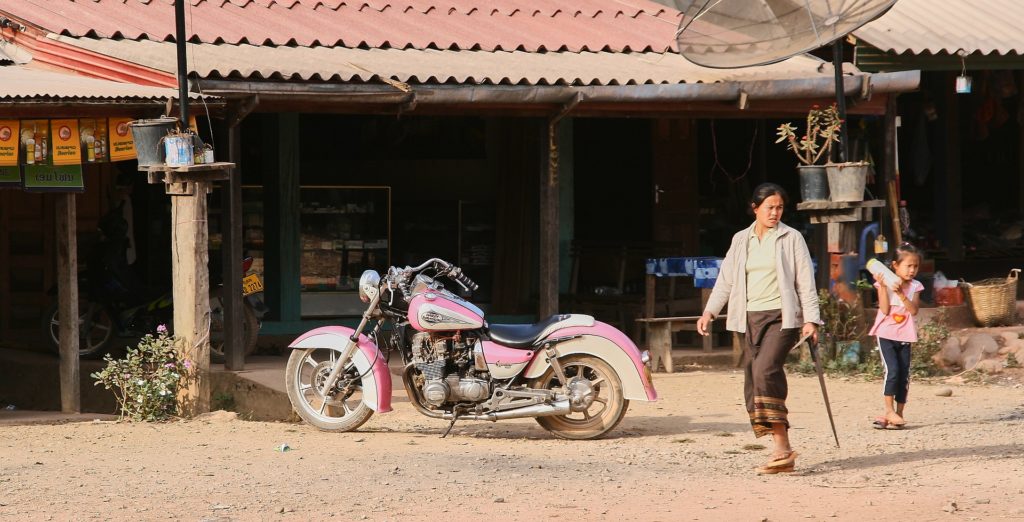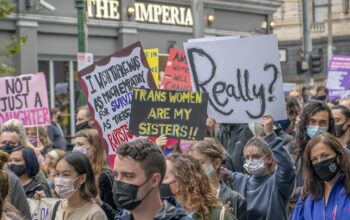Their favourite colour is pink. They love to wear dresses, they like dancing ballet and cooking. They like flowers more than cars and they enjoy taking care of younger children. Typical girls. We heard these clichés before.
What it means to be a woman and what gender roles are associated with is changing over time. Every generation defines femininity and masculinity. This shows for example in the dressing of children. How did these gender stereotypes become dominant and why is this a problem?
Different times, different colours
Already centuries ago in Europe, colour preferences did exist- but differently than we know it today. Red was seen as a signal colour for masculinity and power and since pink was the “small red”, it was used for young boys. Girls on the other hand were dressed in blue, the perceived colour of the Virgin Mary.
For a long time then there was a gender-neutral way to dress young children: white dresses and long hair for everyone until the age of six or seven. White could be bleached easily when it became dirty and it was a neutral colour: you could not dress the child wrong. Why did this tradition disappear?
Pastel colours started to be used for baby clothing, but not in a gender specific way until the beginning of the 20th century. Shortly before WWI, colours started to become signifiers for gender, but just as suggestions. Others advised to dress children according to their hair and eye colours. The shift to colours was slow, and pink and blue not the primary choices.
The colours we know today were established in the United States in the 1940s. Clothing industries interpreted the preferences of the population to sell as much as possible. Marketing teams created separate, gender-specific clothes and toys that were advertised as “must-have”. The women’s liberation movement of the mid-60s and 70s slowed it down for a bit. Girls were dressed in un-feminine, sporty or even masculine styles. Clothing was seen as a mirror of and responsible for gender role models. The female dress code then supported women’s subservient role. Equal clothing, the movement thought, would bring about gender equality. “If we dress our girls more like boys and less like frilly little girls, they are going to have more options and feel freer to be active.” It was argued that we learn gender through external influences.

Until the 1980s, gender-neutral clothing remained popular. But the market returned to the gender-specific colours and made them more popular. Prenatal testing was a strong accelerator of this development. Future parents could know the sex of their child early and prepare. Through the production of individual and gender-specific clothing and now also toys, more could be sold.
Consumerism and pop culture are main drivers for gender stereotyping until today. Through the success of capitalism, this phenomenon has spread over the globe to various cultural and ethnic backgrounds. The reviewed articles all talk about the Western (US/European) context. In other cultural regions, the associations might still be different. But as long as any gender stereotyping exists, then the problem is still the same, no matter the colours.
Being raised in colours- what’s the matter?
“Gender stereotypes are ideas about how girls and boys, women and men are ‘supposed’ to act, talk, think, and behave”. The colours pink and blue are a manifestation of these stereotypes.
Children are given from very early on gender specific toys, when they are not even self-aware of their gender. Around the age of three or four, children start to become more aware. At that age they are impressionable and easy to influence. Market industry is using this in campaigns and advertisements that reinforce the stereotypical social conventions. It becomes visible that children accept the colour preferences they are socialised into. They avoid the colours they are supposed to dislike, they search for things that define them as girl or boy, whilst before they did not show a tendency to gender-specific colours and toys. Subconsciously, girls choose Barbie dolls and wear the pink in order to look feminine.
The way adults treat children affects them. When a kid wears blue and it is assumed to be a boy, people play more physical games with it than a baby dressed in pink, which receives dolls or cooking equipment to play with. Chances and behaviour of children are altered that way. This “blue versus pink” drives gender inequality. They limit the choices of children and hold them back from reaching their full potential.

Same as with colours, there are the clichés of what men and women are suited for, for example in politics: men for leadership and women for social tasks. This is due to the association of men with rationality and women with emotions. There is a pressure to feminine activities or to “be a man”, instead of behaving the way it feels right. This can lead to children being directed to particular interests or careers, just because it is the socially accepted choice.
Women with the leadership style of men are criticised for it, even though they use the same methods. The idea of men not showing emotions or weaknesses leads to some checking less often on their health and suppressing mental issues. Stereotypes affect the mental health, the self-esteem and body image of people. Bullying, discrimination, and other violence, especially towards non-binary people lead to that some do not express themselves fully. Gender stereotyping interferes with the gender children truly feel like. Transgender or gender nonconforming children, that are still raised according to a specific stereotype will be more confused and stressed than children who grew up without constant manifestation of binary genders.
A growing movement today promotes going back towards gender neutrality. Some stores introduce a gender-neutral policy. A whole community does not want to conform, tries to eliminate the stereotypes, demands neutral clothing, to not introduce this binary to kids so early. Boys are dancing ballet too and why wouldn’t girls be able to play basketball?

Bend it like Beckham, girls!
What does it tell us about pink and blue? This dominance could have been exactly the other way around. Or any other colours. The youngest children are attracted by primary colours like red and blue, but studies could not find any preferences. Such preferences are not natural, but a result of capitalism and popular culture, they are constructed and taught to us through socialisation. Gendered colours changed over the course of history. They mirror what femininity and masculinity mean in a society and how gender is understood. Therefore, it is important to call the colours, the stereotypes, the genders into question.
Everyone should have free choices and opportunities, no matter if they are different from the majority. And much that is taken for granted is socially constructed and not natural. Why should there be one colour for one gender? Societies can stop seeing gender as binaries, but look at individuals and support them in a way that everyone can make choices without feeling pressured to fit into a category.
by Nina Kolarzik
Photo credits
Pink Harley Davidson, Daniel Kirsch
Gender Symbol Male Female, Clker-Free-Vector-Images
Intersexuality Symbol,John Hain
Pregnant Lady, Worlds Direction, CC0 1.0 Universal (CC0 1.0)










